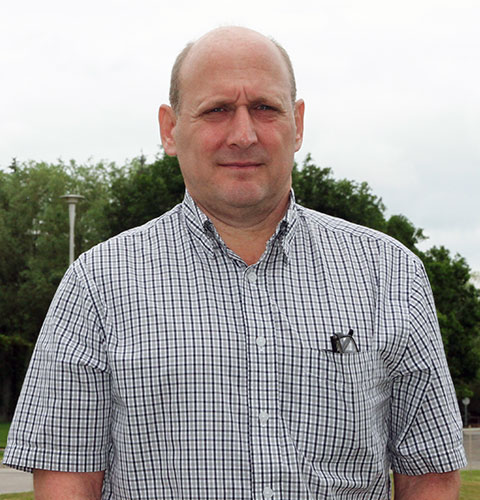U of S, NASA team up on global water survey
Pardon the pun, but Canada is practically overflowing with freshwater.
By HenryTye GlazebrookAnd, believe it or not, that abundance causes problems for water researchers.
“Canada is blessed with more freshwater than anywhere else in the world, but there’s no way you can put sensors in to monitor everything,” said Al Pietroniro, executive director of National Hydrological Services, an adjunct professor with the University of Saskatchewan and member of the Centre for Hydrology. “It’s too big.”

It’s this exact issue that SWOT (Surface Water and Ocean Topography) is aimed at solving. The term refers to a satellite scheduled to launch in 2021 by the National Aeronautics and Space Agency (NASA). SWOT will be capable of measuring surface elevations of any water body large enough for its sensors to collect data on, including the vast majority of Canada’s seemingly infinite northern lakes and rivers.
Water surface elevation is relatively simple information to collect, requiring only limited tools and small teams to venture out to a site and gather measurements. The problem, however, is the time and costs required to make such trips feasible over Canada’s vast landscape. SWOT, if successful, will blow the doors open on the breadth of available data.
“All of a sudden, data that’s only accessible on a three or five or 10-day basis at a few locations is now available immediately and everywhere, and it’s pretty cost effective in that the satellite would already be up,” Pietroniro said. “That changes, from an operational perspective, what you would actually be looking at. It changes what you’d be offering as a service to Canadians.”
The project entered its first phase of calibration and validation on July 7, which involved a series of sites chosen around the globe at which partner institutions have set up teams and equipment to collect data that can be measured against numbers taken from flyover airplanes (AirSWOT)—designed to mimic eventual SWOT data sourcing—in order to cross reference accuracy.
“There’s not a lot of data sitting out there, and so these calibration sites are designed for us to find out what the best way to make sure the satellite is seeing what it’s supposed to see and measuring exactly as it’s supposed to be measuring,” Pietroniro said.
The U of S—one among a list of collaborators which includes NASA and the NASA Above Programme, Canadian Space Agency, Centre national d’études spatiales, NASA’s Jet Propulsion Laboratory, Environment and Climate Change Canada, University of North Carolina, University of California Los Angeles and other researchers—has established data collection sites along the North Saskatchewan River, in Redberry Lake and the St. Denis National Wildlife Area.
Pietroniro, referring to the North Saskatchewan River site as one of the project’s “key global sites,” said the U of S is uniquely positioned to be a leader during the initiative thanks to its robust water research programs, including the Global Institute for Water Security, Global Water Futures and three American Geophysical Union Fellows in Howard Wheater, Jeff McDonnell and John Pomeroy.
“The U of S has peaked at this point with John and Howard and Jeff as examples, and there’s a lot more people with the Toxicology Centre and SENS (the School of Environment and Sustainability), to name a few,” he said. “They’re not only probably the most influential water resources group in Canada, they’re globally probably the most influential as well.”
The SWOT project is still in early stages, but already Pietroniro is excited about the potential applications on everything from ephemeral prairie sloughs to permafrost level calculations and water balance calculations once all the kinks are worked out and it launches in earnest.
“Every reservoir in North America is going to be measurable, all the big ones, and most of the lakes and rivers,” he said. “How does that change how we deal with water management in this country? That data’s really not always available, so that changes so much in terms of what we’re doing.
“I don’t like using the phrase lightly, but I think it is a paradigm shift. It has the potential to really change how we can manage water in this country.”
